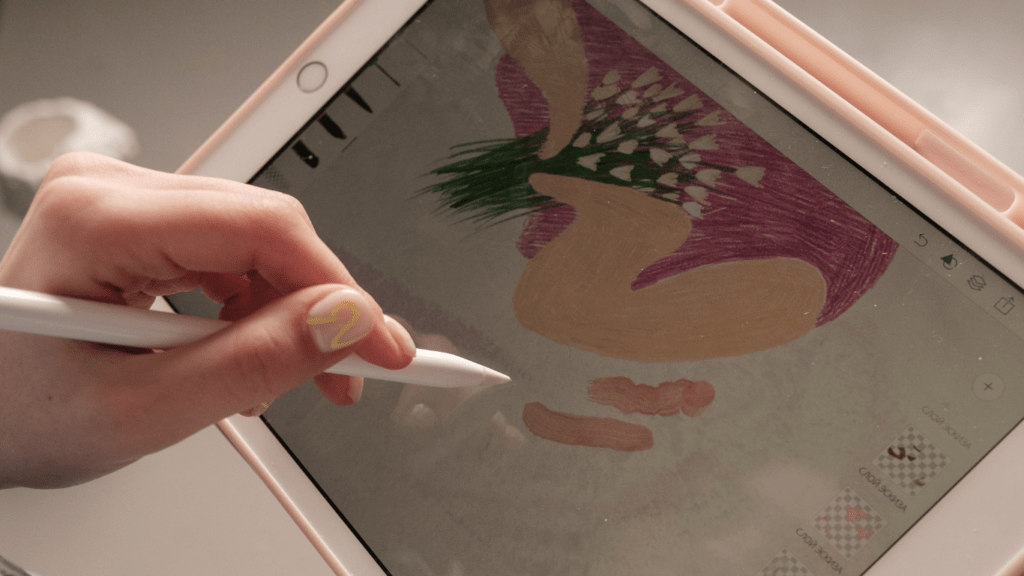The Rise of Digital Art in Creative Industries
Digital art is transforming creative industries by offering new tools and mediums for artistic expression.
Evolution from Traditional to Digital Art
Traditional art relies on physical mediums like canvas, paper, and paint. Digital art uses software and digital tools, such as:
- Adobe Photoshop
- Procreate
- Corel Painter
to create pieces on digital devices. This paradigm shift expands possibilities for creation and distribution.
The transition began in the late 20th century when digital technology became more accessible. Artists started exploring graphics tablets, which mimic traditional drawing and painting, but offer more flexibility and precision. Since then, advancements in hardware and software have made digital art a dominant force in creative industries.
Impact on Traditional Art Forms
Though digital art is rising, it complements rather than replaces traditional art forms. Many artists blend both mediums, creating hybrid works like digitally-enhanced paintings or sculptures. This mix allows new styles and techniques, enriching the creative landscape.
Digital art enhances the preservation and restoration of traditional works. High-resolution imaging and 3D scanning capture details that help artists restore pieces accurately. Institutions like museums and galleries use these technologies to offer virtual tours, making traditional art globally accessible.
Digital platforms also provide new avenues for exposure and sales. Artists can showcase their work on social media, digital galleries, and art marketplaces. This democratization helps emerging artists reach global audiences without traditional gatekeepers.
Technologies Pioneering the Digital Art Revolution
Innovative technologies are driving the digital art revolution, expanding creative possibilities.
3D Printing and Modeling
3D printing and modeling have revolutionized how artists create sculpture and physical objects. Artists use software like Blender and ZBrush to design intricate models that can be printed using a variety of materials, from plastics to metals.
This technology enables the creation of complex, detailed pieces that would be difficult, if not impossible, to produce by hand. Additionally, 3D printing accelerates the prototyping process for large-scale installations and commercial products, making it an indispensable tool for modern artists.
Virtual and Augmented Reality
Virtual and augmented reality (VR and AR) are transforming how art is experienced and created. In VR, artists can build immersive environments and interactive pieces, offering viewers an experience that goes beyond traditional 2D and 3D perspectives.
For example, platforms like Tilt Brush allow artists to paint in a 3D space using VR headsets. AR, on the other hand, overlays digital elements onto the real world, which is particularly powerful for exhibitions and public art installations.
Applications such as ARKit and ARCore enable artists to create pieces that interact with the viewer’s environment, blending physical and digital realms seamlessly.
These technologies, from 3D printing to VR and AR, are continuously shaping the landscape of creative industries, making digital art a cornerstone of modern artistic expression.
Digital Art’s Influence on Various Creative Sectors

Digital art significantly impacts different creative industries, driving innovation and expanding possibilities. Let’s explore its role in specific sectors.
Film and Animation
Digital art revolutionizes film and animation. Advances in CGI (Computer-Generated Imagery) enable filmmakers to create visually stunning effects. Pixar, for example, uses digital art to produce animations that captivate global audiences. Rendering technology enhances lifelike textures and dynamic environments.
Digital tools streamline the animation process, reducing production time while maintaining high-quality output. Techniques like motion capture add realism to character movements, elevating storytelling.
Advertising and Graphic Design
Digital art transforms advertising and graphic design.
- Designers utilize software like Adobe Illustrator to create engaging visuals.
- Digital mediums allow for interactive ad experiences, enhancing consumer engagement.
- Brands like Nike leverage digital art to produce striking campaigns that resonate with audiences.
- Data visualization simplifies complex information, making advertisements more effective.
- Digital design tools enable rapid prototyping, allowing creatives to iterate quickly and stay competitive in fast-paced markets.
Economic Impact of Digital Art
Digital art’s economic impact can be seen in its ability to create new markets, generate revenue streams, and provide job opportunities. By shaping these elements, digital art significantly contributes to the growth of creative industries.
New Markets and Revenue Streams
Digital art opens new markets by enabling artists to sell and market their work online. Using platforms like DeviantArt and ArtStation, artists reach global audiences, eliminating geographical limitations.
Digital art marketplaces also sell NFTs (non-fungible tokens) on platforms like OpenSea and Rarible, allowing artists to monetize their digital works uniquely. These markets provide additional revenue streams for artists by enabling sales of digital prints, commissioned work, virtual merchandise, and even tutorials.
Job Opportunities and Skill Development
The rise of digital art creates diverse job opportunities. Companies need digital illustrators, graphic designers, and animation artists. Education platforms like Coursera and Udemy offer courses on digital tools like Adobe Creative Suite, Blender, and Procreate, allowing individuals to develop specialized skills.
As companies seek digitally-skilled artists for roles in gaming, film, and marketing, demand for these positions increases, stimulating job growth within the economy.
Opportunities for freelancers also expand due to the flexibility of digital art. Platforms like Fiverr and Upwork connect clients with artists for various projects, from logo design to digital illustrations, increasing job prospects for independent digital artists.
Challenges and Opportunities
The rise of digital art introduces both challenges and opportunities in the creative industries, impacting numerous aspects from intellectual property to sustainability.
Intellectual Property Concerns
Digital art makes it easy to share and distribute creations, but this convenience raises serious intellectual property (IP) issues. Artists face challenges in protecting their work due to rampant online piracy and unauthorized reproductions. To combat this, digital rights management (DRM) systems and blockchain technology are emerging as solutions.
For example, platforms like Verisart provide blockchain-based certification, helping artists prove ownership and authenticity. However, enforcing IP rights across jurisdictions remains complex, especially with varying international laws and regulations.
Sustainability in Digital Art Production
While digital art reduces the need for physical materials, it contributes to electronic waste and energy consumption. High-powered computers and graphic tablets require regular updates and disposal, adding to environmental concerns.
However, the potential for sustainability emerges through the use of energy-efficient hardware and renewable energy sources in data centers. Companies like Nvidia and Apple invest in creating more energy-efficient devices, aiming to lessen the environmental impact. Additionally, virtual collaboration tools reduce the need for travel, further decreasing the carbon footprint of digital artists.

 Anna Freehill, a key contributor to Avant Garde Artistry Hub, plays a vital role in shaping the platform’s vision. As an author and collaborator, she helps bridge the worlds of art and technology, offering insightful articles that guide artists through the rapidly evolving creative landscape. Anna’s dedication to highlighting art's therapeutic value has contributed to the platform’s focus on mental and emotional well-being through creative expression.
Her involvement in building Avant Garde Artistry Hub has been instrumental in providing valuable resources to artists seeking to enhance their careers. Whether through her writing on business strategies or her support in platform development, Anna is committed to fostering a space where artists can thrive and embrace the future of art.
Anna Freehill, a key contributor to Avant Garde Artistry Hub, plays a vital role in shaping the platform’s vision. As an author and collaborator, she helps bridge the worlds of art and technology, offering insightful articles that guide artists through the rapidly evolving creative landscape. Anna’s dedication to highlighting art's therapeutic value has contributed to the platform’s focus on mental and emotional well-being through creative expression.
Her involvement in building Avant Garde Artistry Hub has been instrumental in providing valuable resources to artists seeking to enhance their careers. Whether through her writing on business strategies or her support in platform development, Anna is committed to fostering a space where artists can thrive and embrace the future of art.